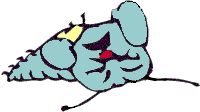
VFP 7 Service Pack 1 fixes a bug in the original release of VFP 7 (but not previous versions of VFP): Scrollbars on edit boxes didn't show in an EXE running under the runtime libraries. A patch to fix this was released almost immediately after VFP 7 was; Service Pack 1 includes this fix, so if you haven't already installed the patch, there's no need to do so once you have SP1.